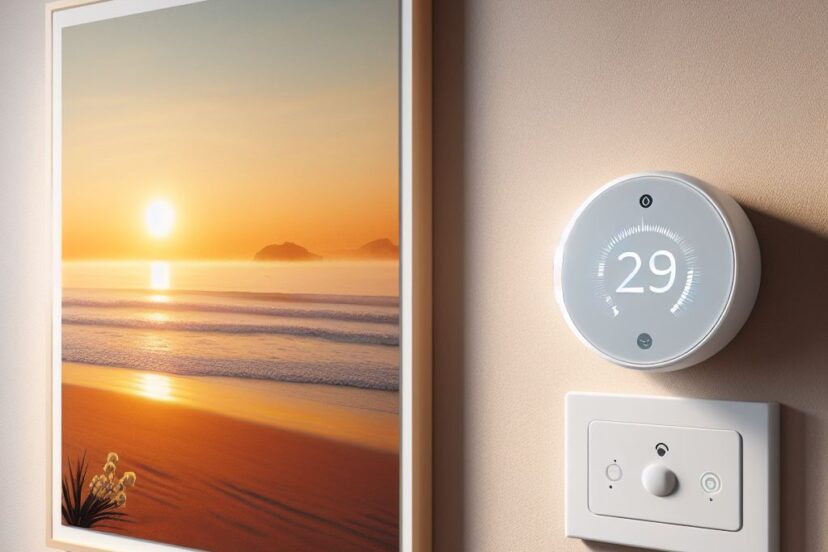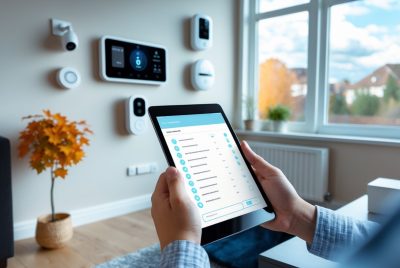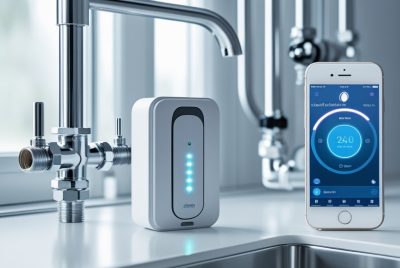HomeKit Thermostat: Smart Climate Control
*We may earn a commission for purchases made using our links. Please see our disclosure to learn more.
HomeKit Thermostat: A Comprehensive Guide for Smart Home Enthusiasts
Introduction to HomeKit Thermostats
The world of smart home technology is rapidly evolving, and a HomeKit thermostat are at the forefront of this revolution. Apple’s HomeKit has redefined home automation, making it more accessible and user-friendly. These thermostats are not just temperature control devices; they are integral components of a smart home ecosystem, offering unmatched convenience and efficiency.
The Evolution of Thermostats
From the days of bulky, manual dial thermostats to modern digital models, the journey has been remarkable. HomeKit thermostats represent the pinnacle of this evolution, combining sophisticated technology with intuitive design. They’re more than just programmable; they’re intelligent, learning your habits and adjusting the environment to suit your needs.
The Benefits of Using a HomeKit Thermostat
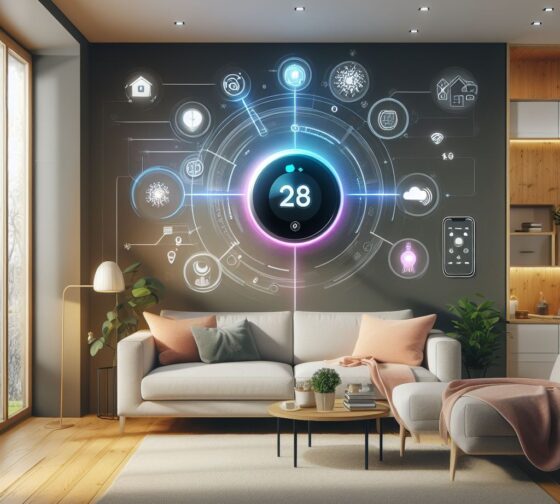
Ease of Use and Convenience
One of the primary benefits of a HomeKit thermostat is its ease of use. With intuitive controls and seamless integration with iOS devices, these thermostats are accessible to everyone, regardless of technical expertise. Voice commands via Siri make adjusting the temperature as simple as speaking, and the ability to control settings from anywhere through your iPhone adds a layer of convenience that traditional thermostats can’t match.
Energy Efficiency and Cost Savings
HomeKit thermostats are designed to optimize energy usage, learning your schedule and adjusting temperatures accordingly. This not only conserves energy but also leads to significant cost savings on utility bills. Over time, these savings can offset the initial investment in the thermostat.
Integration with Apple Ecosystem
For those invested in the Apple ecosystem, a HomeKit thermostat is a natural extension. It integrates smoothly with other Apple products and services, offering a cohesive and interconnected experience. This integration means you can control not just your thermostat but also other smart home devices through a single interface.
Key Features to Look for in a HomeKit Thermostat
When selecting a HomeKit thermostat, there are several key features to consider ensuring you get the most out of your smart home experience. Firstly, compatibility is crucial; the thermostat should seamlessly integrate with HomeKit and other devices in your home. Smart scheduling is another essential feature, allowing the thermostat to automatically adjust the temperature based on your daily routine, enhancing both comfort and energy efficiency. Remote access and control are also important, as they enable you to adjust your home’s temperature from anywhere, providing convenience and flexibility. These features, combined, make a HomeKit thermostat an intelligent addition to any smart home setup, offering ease of use, energy savings, and a seamless integration with the wider Apple ecosystem.
Top 3 HomeKit Thermostat Models
- Ecobee Smart Thermostat: Recognized as the best overall, this thermostat offers excellent smart features, including a built-in Siri and a C-wire adapter for easy integration with your home’s HVAC system.
- Honeywell T9: This model is praised for its value and ease of setup. It comes with a clear display and includes a C-wire adapter, making it a practical choice for many homes.
- Sinope Smart Thermostat: Ideal for line voltage requirements, the Sinope thermostat supports 120-240v and offers models that can handle either 3000W or 4000W. Its easy installation process makes it a top choice for those with specific line voltage heating systems.
Installation and Setup of the HomeKit Thermostat
Installing a HomeKit thermostat is typically a straightforward process. Most models come with detailed instructions, and basic tools are usually all that’s needed. It’s important to turn off your HVAC system at the breaker before starting the installation to ensure safety.
After installation, connecting the thermostat to HomeKit is a simple process. This usually involves scanning a QR code with your iPhone, which will guide you through the setup process. Ensure your home Wi-Fi network is stable and strong for the best performance. Follow the manufacturer’s guide carefully and take your time with the setup. If you’re not comfortable with DIY installations, consider hiring a professional to ensure everything is set up correctly.
Maximizing Your HomeKit Thermostat Experience
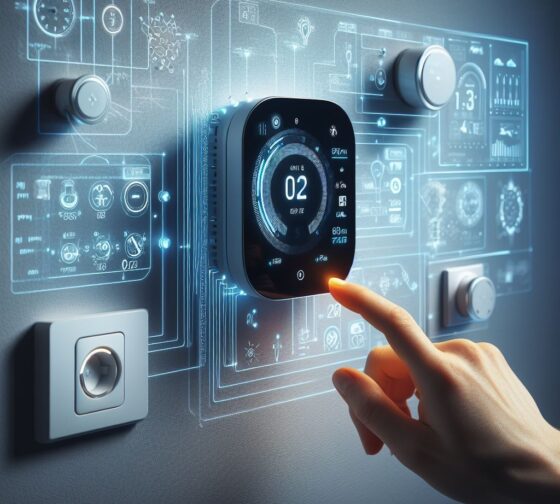
Optimizing Temperature Settings
To make the most of your HomeKit thermostat, experiment with different temperature settings to find what works best for you. Consider the time of day, the season, and your personal preferences when setting up schedules.
Using Scenes and Automation
HomeKit allows you to create scenes that can control multiple devices simultaneously. For example, you can create a “Good Morning” scene that adjusts the thermostat, turns on the lights, and opens the blinds all with a single command.
Integrating with Other Smart Devices
Your HomeKit thermostat can work in tandem with other smart devices like lights, locks, and security systems. This integration can enhance security, improve energy efficiency, and create a more comfortable and convenient home environment.
Troubleshooting Common Issues
- Connectivity Problems: If you encounter connectivity issues, the first step is to check your Wi-Fi network. Ensure your thermostat is within range of your router and that there are no obstructions causing interference.
- Calibration Challenges: Calibration issues can sometimes lead to inaccurate temperature readings. Most HomeKit thermostats offer a recalibration feature, which can help resolve these issues.
- Firmware Updates: Regular firmware updates are crucial for maintaining the performance and security of your thermostat. Ensure your device is set to update automatically or check for updates regularly.
The Future of HomeKit and Smart Home Technology
We are witnessing an era where smart home devices are becoming more interconnected and intelligent. HomeKit thermostats are at the forefront of this trend, with advancements in AI and machine learning enhancing their capabilities. The future of HomeKit thermostats lies in even more advanced learning algorithms, better integration with renewable energy sources, and more intuitive user interfaces. We can expect these devices to become even more essential components of the smart home ecosystem.
Conclusion: Why a HomeKit Thermostat is a Smart Choice
A HomeKit thermostat represents a significant step towards a more efficient, convenient, and intelligent home. Its ability to learn and adapt to your lifestyle, coupled with energy-saving features and seamless integration with the Apple ecosystem, makes it an invaluable addition to any smart home.
FAQs
- How does a HomeKit thermostat differ from a regular thermostat? HomeKit thermostats offer advanced features like smart scheduling, remote control, and integration with other smart home devices, which regular thermostats lack.
- Can I control a HomeKit thermostat with voice commands? Yes, you can use Siri to control your HomeKit thermostat with voice commands, making it incredibly convenient to adjust settings without manually interacting with the device.
- What happens if my Wi-Fi goes down? If your Wi-Fi is down, you may lose remote access and some smart features, but the thermostat will continue to function and maintain the last set temperature.
- Is it worth upgrading to a HomeKit thermostat? Upgrading to a HomeKit thermostat is a worthwhile investment, especially if you value convenience, energy efficiency, and integration with other smart home devices.
- Can I integrate a HomeKit thermostat with non-Apple products? While HomeKit thermostats are designed to work best within the Apple ecosystem, many models offer compatibility with other smart home platforms and devices.

